Tooth extraction, specifically of the upper molars, can occasionally lead to sinus exposure or an oral-antral communication (OAC). This condition occurs when the extraction creates a small hole in the sinus membrane, connecting the mouth and the maxillary sinus cavity. Although it sounds daunting, with careful postoperative management, most OACs heal well. Here are important instructions to ensure an optimal healing process.
Sinus Precautions
Following an extraction with sinus exposure, sinus precautions must be observed to allow the sinus membrane to heal and prevent further complications.
- Avoid Blowing Your Nose: Refrain from blowing your nose for at least 2 weeks following the procedure. This prevents pressure changes that could disrupt the healing process. If you need to sneeze, do so with your mouth open to avoid any pressure in the sinuses.
- No Smoking or Use of Straws: Both these activities create a negative pressure in the mouth, which can dislodge the clot or delay healing. It’s best to avoid smoking altogether, as it interferes with your body’s healing process.
- Nasal Decongestants: If you have a history of sinus issues or if you feel congested, a nasal decongestant may be recommended to keep your sinuses clear and reduce pressure.
Pain and Discomfort Management
Pain and discomfort are common after tooth extractions, especially those involving sinus exposure. Over-the-counter pain medications, such as acetaminophen or ibuprofen, are typically sufficient for managing postoperative pain. If necessary, your dentist may prescribe stronger pain medications. Always use medications as directed by your healthcare provider.
Bleeding Management
Some bleeding or oozing is expected after the extraction. You may also notice some blood in your nose, which is normal. If heavy bleeding is observed, gently bite down on a gauze pad placed over the extraction site or on a moistened tea bag. The tannic acid in the tea helps form a clot by contracting the bleeding vessels.
Swelling Management
Swelling and bruising around the surgical site are normal postoperative occurrences. Apply an ice pack to the affected area on and off for the first 24 hours to minimize swelling. A warm compress can be used after the first day to promote healing and relieve discomfort.
Oral Hygiene
Good oral hygiene is critical to prevent infection and promote healing. Continue to brush and floss your teeth, but avoid the extraction site. Twenty-four hours after the extraction, gently rinse your mouth with warm salt water (1/2 teaspoon of salt in a cup of warm water) several times a day.
Diet
Maintain a soft diet for the first few days following your surgery. Foods like yogurt, applesauce, smoothies, and mashed potatoes are excellent choices. Drink plenty of fluids, but avoid using a straw, as the suction can disrupt the sinus healing.
Activity
Rest and avoid strenuous activities for the first few days following the extraction. Elevating your head when lying down can help minimize swelling.
Follow-Up Appointments
Ensure to keep all follow-up appointments so your dentist can monitor the healing process. Should you experience severe pain, excessive or prolonged bleeding, swelling that worsens after 2-3 days, or any other concerns, contact your dentist immediately.
Conclusion
Proper postoperative care is critical for a successful recovery after a tooth extraction involving sinus exposure. Pain management, bleeding control, maintaining good oral hygiene, a suitable diet, and rest are all essential components of postoperative care. By adhering to these instructions, complications can be prevented, and healing can be optimized.
